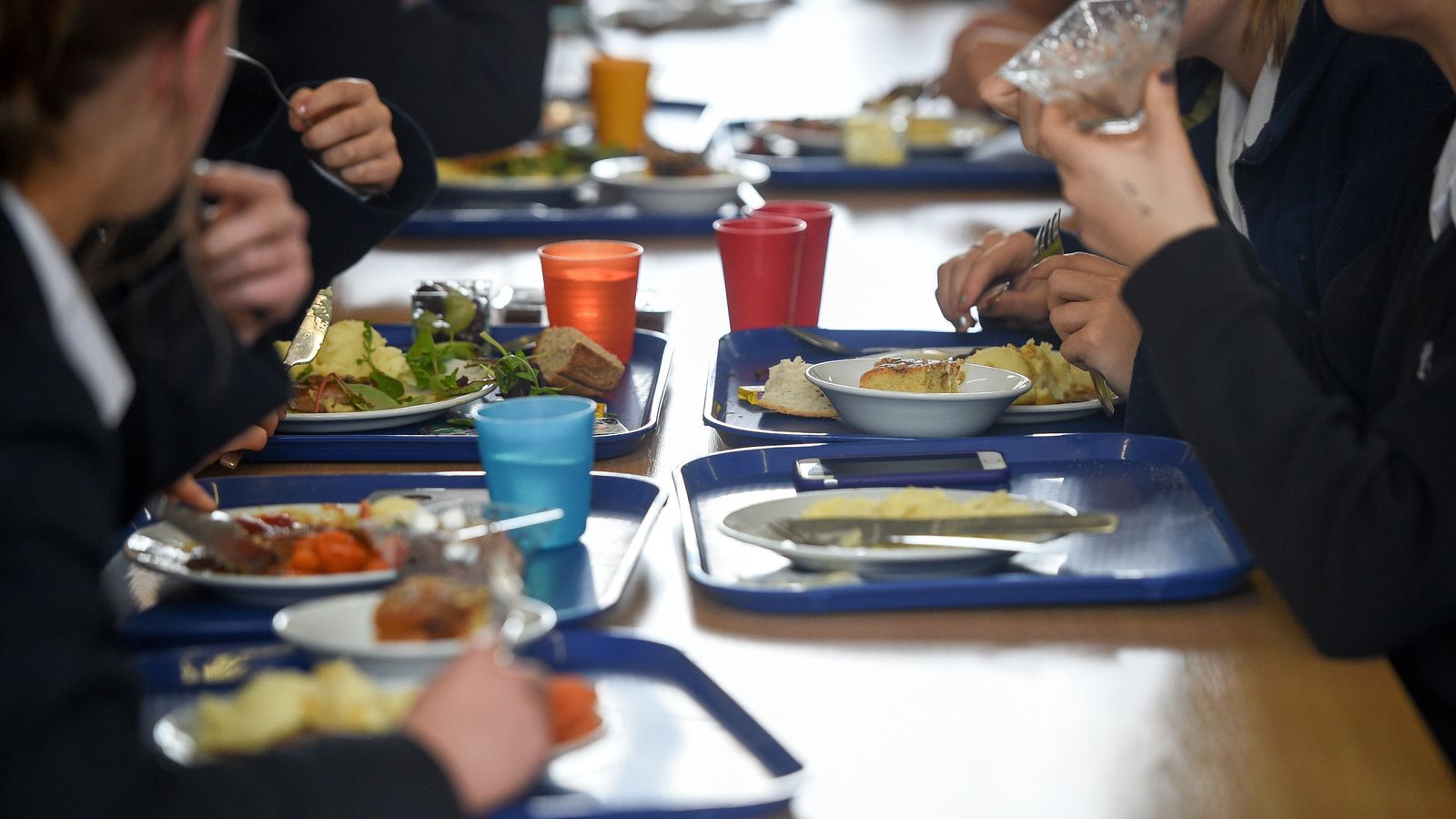Twenty seven schools in England are using a facial recognition system to take lunch payments from children, with 15 more due to start using the system shortly.
Nine schools in North Ayrshire in Scotland began using the system this week, as the Financial Times reported, with 13 more schools soon to follow with the aim of speeding up queues and reducing the COVID-19 transmission risk if children share the same fingerprint scanner.
But the news caused concern from parents and campaigners who warned that it normalised exposing children to biometric surveillance, and complained that they weren’t confident students were being adequately informed about the privacy risk.
Please use Chrome browser for a more accessible video player
David Swanston, managing director of CRB Cunninghams, told Sky News that some of the concern was misplaced: “I think the thing that hasn’t been reported… is that this is not a normal live facial recognition system.
“This is an on-demand, on-request capture facial recognition system. At the point of sale in a school, someone has to present themselves to a webcam. It’s not recording all the time. And the operator at the till point has to physically touch the screen.”
At this point the system then does a comparison between the student in front of the webcam – as selected by the operator tapping the screen – and the computer’s records of biometric templates. If there is a match then the payment is made from the associated cashless account.
The biometric profiles used as a comparison for the images of students in the queue are stored by the schools themselves, either on-premises or in a specific cloud for that school.
Facebook reportedly planning to rebrand the company with name change
Drone missions to rescue dogs from volcano in La Palma
Facebook fined £50m for ‘refusing to comply’ with regulator
Just under 70 schools have either ordered the system, are currently using it or are about to go live with it, Mr Swanston said. Other schools may be using similar systems from different providers.
According to North Ayrshire council, children or their parents consented to use the system to pay for lunches in 97% of cases.
But campaigners for children’s privacy rights, Jen Persson and Pippa King, wrote to the Children’s Commissioner in Scotland to complain: “High uptake should not be mistaken as consent.
“There can be no freely given consent when the power imbalance with the authority is such that it makes it hard to refuse.
“We’ve seen some of the forms sent to parents in this latest rollout in Scotland where the wording makes acceptance seem compulsory: ‘If you wish to access meals/snacks (free or paying)… you must register for an account.’ The question of meaningful consent seems cursory at best,” they added.
Mr Swanston told Sky News that the schools were responsible for holding the data and operating the system and also for getting consent from children and parents, although the company offers template consent forms to its customers.
Please use Chrome browser for a more accessible video player
Automated or live facial recognition systems have caused controversy for police in the UK, prompting the Metropolitan Police to commission a study which subsequently found that its system was 81% inaccurate.
The force disavowed the findings, with the deputy assistant commissioner, Duncan Ball, saying they were “extremely disappointed with the negative and unbalanced tone of this report”.
Mr Swanston said some schools had shown concerns about the system as a result of the reporting on the North Ayrshire schools and the company is planning on issuing a statement to reassure them next week.
“We’ve actually had people now that have seen the press releases, and they’re asking instead of going live with facial recognition in a few weeks time, can they revert to fingerprints,” he told Sky News.
Fraser Sampson, the independent biometrics commissioner, told Sky News: “First there’s nothing intrinsically wrong with the idea – we’ve been using it for while now in our phones and facial recognition offers same wonderful opportunities to improve people’s lives – from ensuring the safety of people with dementia to allowing visitors to navigate around museums and receive a commentary on what they’re looking at. It’s the use and the user that’s key here.
“If the police or local authorities use surveillance cameras they have a legal duty to follow the government’s Code of Practice because parliament recognised the different levels of intrusiveness where the state uses it without your express agreement.”
“The code says that if there is a less intrusive way of achieving the same objective you should use it,” he added.
Although the code doesn’t apply to school deployments of CCTV, the value of a facial recognition system compared to swipe cards (which children can lose) or fingerprints – where “you might have 1,000 fingers go through that at lunch time”, according to Mr Swanston – could decrease the risk of transmission during the pandemic.
Figures released earlier this month by the Department for Education revealed that on one day more than 204,000 children – 2.5% of all pupils in England – did not attend school for COVID reasons.
“The real challenge with biometric technology is that it’s so useful,” added the commissioner.
“Once you install it for one function you’ll probably want to expand it very quickly into other obvious areas and you get this concept of ‘function creep’.”






















